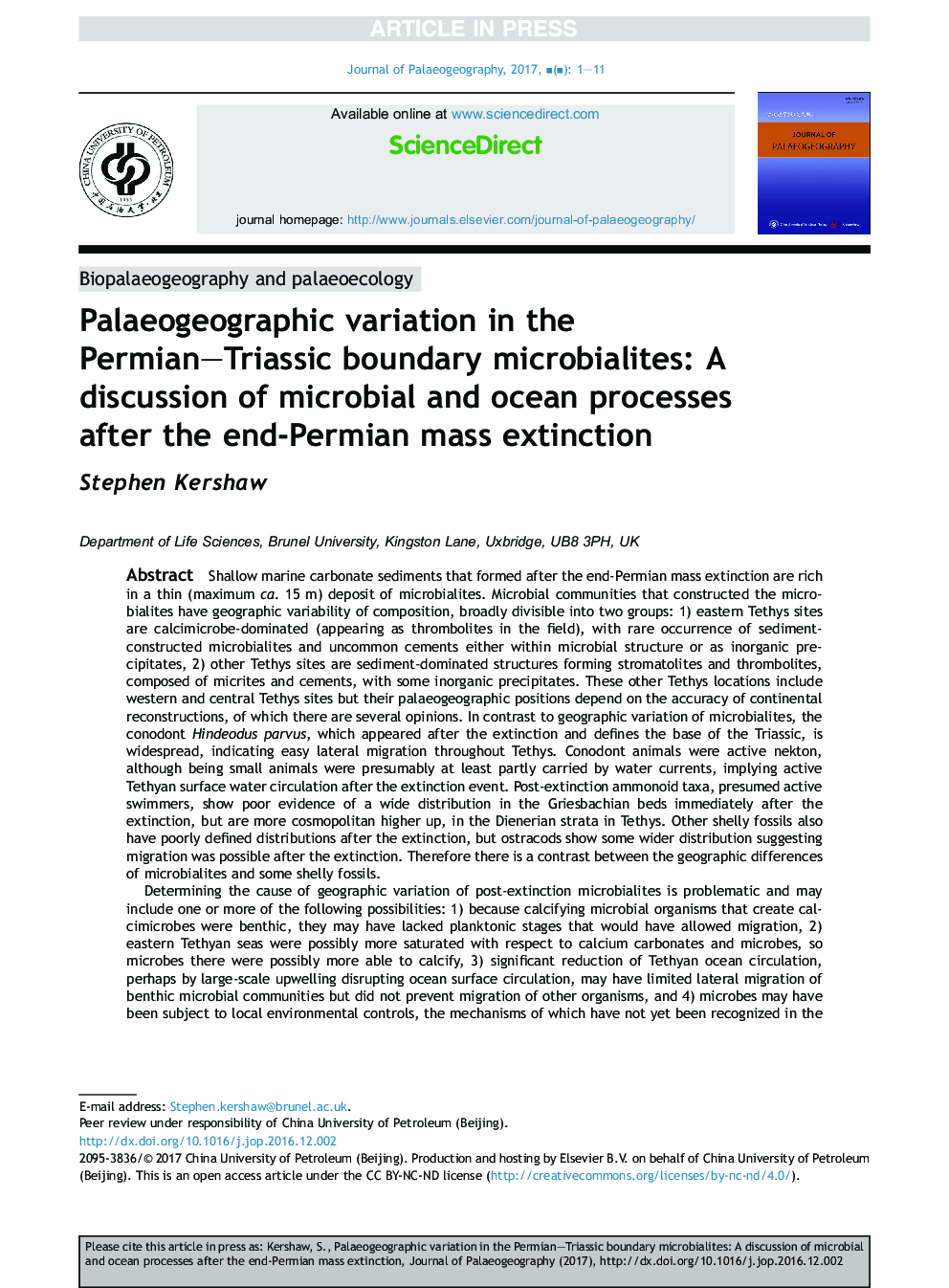| کد مقاله | کد نشریه | سال انتشار | مقاله انگلیسی | نسخه تمام متن |
|---|---|---|---|---|
| 8895341 | 1630317 | 2017 | 11 صفحه PDF | دانلود رایگان |
عنوان انگلیسی مقاله ISI
Palaeogeographic variation in the Permian-Triassic boundary microbialites: A discussion of microbial and ocean processes after the end-Permian mass extinction
ترجمه فارسی عنوان
تنوع پائولوژیکی در میکروبیالیت های مرزی پرمین-تریاس: بحث در مورد فرایندهای میکروبی و اقیانوس پس از انقباض جمعی انتهای پرمین
دانلود مقاله + سفارش ترجمه
دانلود مقاله ISI انگلیسی
رایگان برای ایرانیان
کلمات کلیدی
استروماوتولیت، ترومبولیت، میکروبیالیت، پرمین مرز تریاس، کنودوکس، تتیس، انقراض جمعی،
ترجمه چکیده
تعیین علت تنوع جغرافیایی میکروبیالیت ها پس از انقراض مشکل ساز است و ممکن است یکی یا بیشتر از موارد زیر را شامل شود: 1) چون کلسیم میکروبی ها که کلسیم میکروب ها را کلسیم میکروبی تشکیل می دهند، کلسیم میکروبی هستند، ممکن است مراحل پلانکتونی داشته باشند که اجازه مهاجرت را ندهد 2) دریاهای تتیان شرقی، احتمالا بیشتر با توجه به کربنات کلسیم و میکروب ها اشباع شده بود، بنابراین میکروب ها احتمالا قادر به کلسیفیک شدن بودند؛ 3) کاهش قابل توجهی از گردش خون اتیل تتیانی، شاید به دلیل گسترش زیاد گردش خون در اقیانوس، موجب محدود شدن مهاجرت جانبی از جوامع میکروبی بنیادی، اما از مهاجرت سایر موجودات جلوگیری نمیکند، و 4) میکروبها ممکن است تحت کنترل محیط زیست محلی قرار داشته باشند، مکانیزمهایی که هنوز در رخسارهها شناخته نشدهاند. دشواری تشخیص بین این امکانات (و شاید دیگران شناسایی نشده) نشان می دهد که هنوز در مورد میکروبیالیت های پس از انقراض و کنترل های آنها هنوز هم وجود دارد.
موضوعات مرتبط
علوم زیستی و بیوفناوری
علوم کشاورزی و بیولوژیک
دانش خاک شناسی
چکیده انگلیسی
Determining the cause of geographic variation of post-extinction microbialites is problematic and may include one or more of the following possibilities: 1) because calcifying microbial organisms that create calcimicrobes were benthic, they may have lacked planktonic stages that would have allowed migration, 2) eastern Tethyan seas were possibly more saturated with respect to calcium carbonates and microbes, so microbes there were possibly more able to calcify, 3) significant reduction of Tethyan ocean circulation, perhaps by large-scale upwelling disrupting ocean surface circulation, may have limited lateral migration of benthic microbial communities but did not prevent migration of other organisms, and 4) microbes may have been subject to local environmental controls, the mechanisms of which have not yet been recognized in the facies. The difficulty of distinguishing between these possibilities (and maybe others not identified) demonstrates that there is a lot still to learn about the post-extinction microbialites and their controls.
ناشر
Database: Elsevier - ScienceDirect (ساینس دایرکت)
Journal: Journal of Palaeogeography - Volume 6, Issue 2, April 2017, Pages 97-107
Journal: Journal of Palaeogeography - Volume 6, Issue 2, April 2017, Pages 97-107
نویسندگان
Stephen Kershaw,
